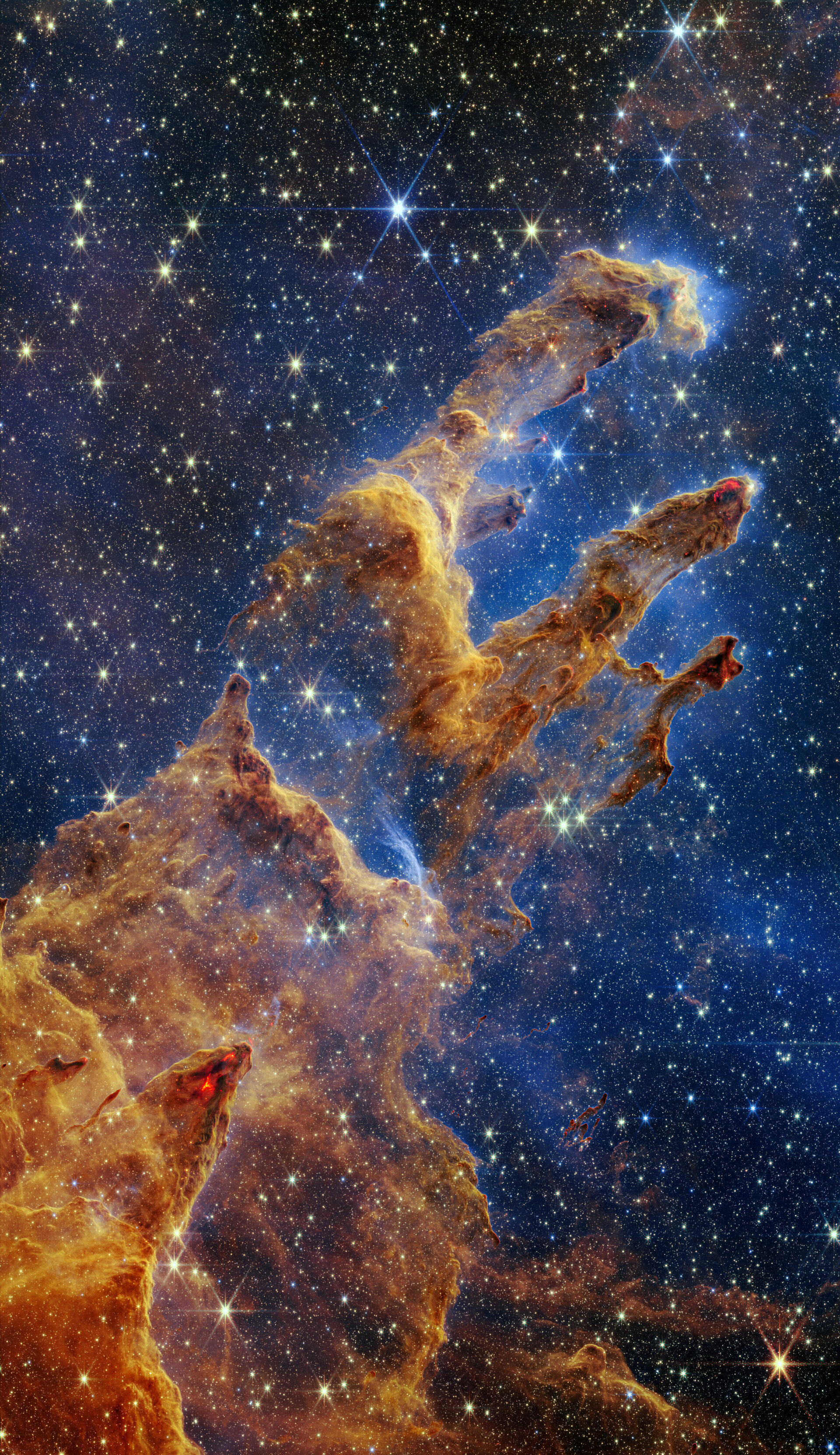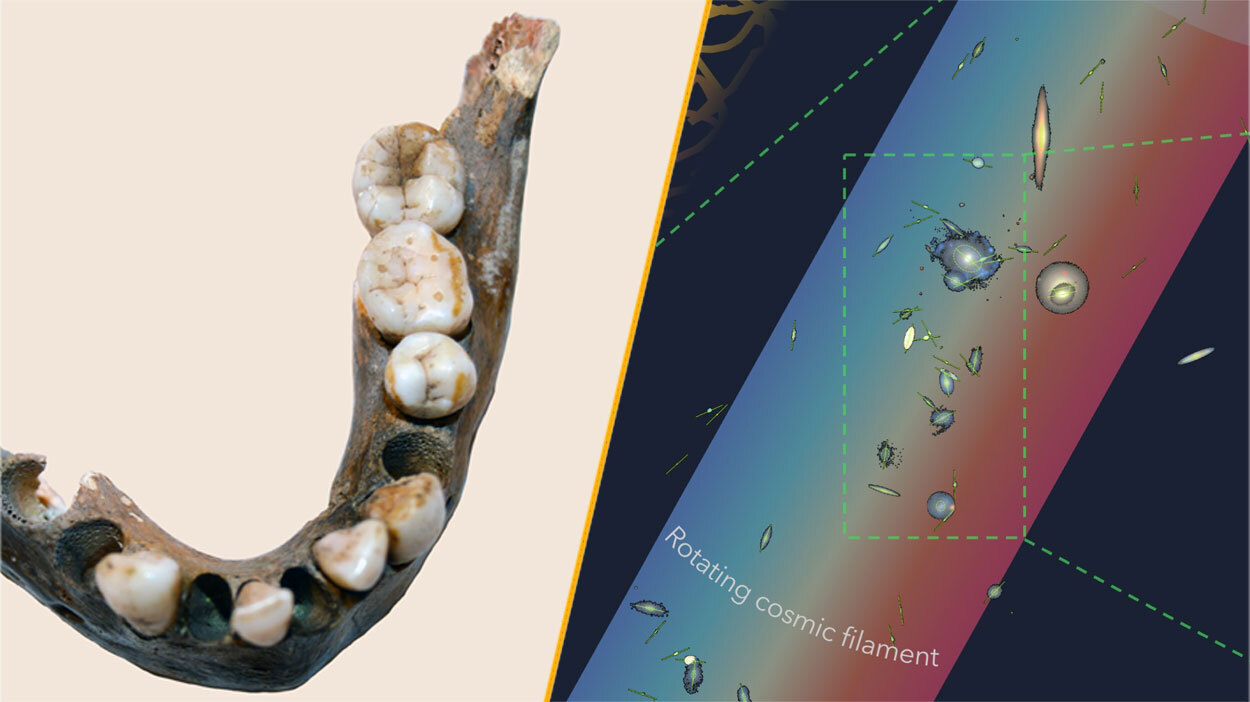Stunning 'pillars of creation' shine like never before in new James Webb Telescope image
The towering pillars of creation, captured by the James Webb Telescope, are a nursery of newborn stars that’s been slowly destroying itself for millions of years.

The James Webb Space Telescope (JWST) has trained its lenses on the infamous "pillars of creation" – a vast, sculptural expanse of gas, dust and baby stars in the Milky Way that has captivated sky-watchers with its beauty for decades.
The resulting image, jointly released by NASA and the European Space Agency on Oct. 19, is just as stunning as you'd hope. The cosmic close-up captures the signature three-finger form of the pillars in unprecedented detail – including red, lava-like squiggles at the tips of several pillars that represent supersonic jets of matter blasting out of still-forming stars.
But beyond the surface-level beauty, the image also reveals a hidden multitude of never-before-seen, newly-formed stars in and around the gas clouds. According to NASA, this upgraded view of the iconic pillars will help astronomers hone their models of star formation, allowing them to count the precise numbers of stars and quantities of gas in the region.
Located in the Eagle Nebula about 6,500 light-years from Earth, the pillars became world famous in 1995 after the Hubble Space Telescope first revealed their beauty. The towering blobs of gas and dust – the tallest of which spans about 4 light-years from base to tip, or about the distance from Earth to its closest neighboring star system, Alpha Centauri – have been likened to castles in the sky, cosmic stalagmites or glimpses of a deep-space coral reef.
In reality, the pillars are the surviving clumps of gas in a once-gargantuan hydrogen cloud, which has slowly been eroded away by the intense radiation of massive newborn stars, according to NASA.
Over millions of years, starlight has sculpted the gas cloud into the finger-like shapes we see today – but even now, the pillars are slowly being eroded away by the young stars in and around them.
Even with their beauty slowly fading – and slightly more gas shaved off of their edges in every new telescope observation – the pillars of creation still remain one of the most iconic structures in the night sky.
Get the world’s most fascinating discoveries delivered straight to your inbox.

Brandon is the space / physics editor at Live Science. With more than 20 years of editorial experience, his writing has appeared in The Washington Post, Reader's Digest, CBS.com, the Richard Dawkins Foundation website and other outlets. He holds a bachelor's degree in creative writing from the University of Arizona, with minors in journalism and media arts. His interests include black holes, asteroids and comets, and the search for extraterrestrial life.



